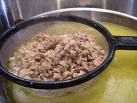Beef (brief) history: From Columbus cattle to Uncle Sam to U.S. lean steak
Many take beef to be just a plate of red meat heavy on saturated fats or something that can be made into candles and soaps by do-it-yourselfers (most of whom experiment with all kinds of homemade products). But that is just not it. Beef has shaped American history to a great extent. If you are familiar with a couple of bovine books, you would know that beef has been influential in the shaping of America’s food culture and fast-food history. It may sound funny to think of a heavy black-brown animal to an influence a country, but there is truth to it.
Historical Timeline of Beef: The history of beef is quite long, starting from the times of Columbus in the year of 1493. From that era, the cow has come to grow into a huge business. From cowboy marketing, American farmers moved to expansive realms that made beef tallow and used it for soaps, candles, cooking, leather and other industries. Then, came the McDonald’s, the hamburgers and all the obesity-causing, multi-million dollar fast food chains. Most of these chains, including the McDonald’s, used beef tallow as oil, the ancient harder cooking oil for deep frying.

Below is a brief history of beef in America that outlines just the important milestones:
Columbus brings cattle: Christopher Columbus was the first one to introduce cattle to the Western Hemisphere in 1493. However, Hernando Cortez was the first one to bring cattle to North America in 1519. With the cattle introduced, farmers took up to cattle farming. However, at first it was only done for milk production.
Uncle Sam and Beef: In a way, the American Government came to be known as ‘Uncle Sam’ only due its association with beef. During the 1817 war, a New York meat packer called Sam Wilson supplied meat to the army in barrels. Since the barrels were government property, they were branded with the U.S. label. Soldiers joked about this saying that U.S. actually meant Uncle Sam. The term and association stuck over course of time and from then on, the U.S. government came to be known as Uncle Sam.
The American Hamburger: The first ever burger was a greasy, just-out-of-the-oven slices of bread garnished with ground mustard mixed with mayonnaise, onion and cucumber pickles. It was sold by Fletcher Davis (an American from Texas) in 1904 at the St. Louis World Fair at Athens. With the people of Athens pleased with the new item, it was selling like hot cakes at the fair and soon came to be called the much-revered hamburger.
French Fries and beef: The story goes that while returning from the Fair at Athens, Fletcher Davis was interviewed by a reporter who was curious to know about the fried potatoes he sold at the Fair. Commenting on them, Davis said that he learned the art of frying potatoes that way from his friend in Paris, Texas. Mistakenly, the reporter associated Paris to France and the name of French Fried potatoes stuck from then on. The first French fries were fried with beef tallow.
Lean steak: In 2005, the United States announced that 29 cuts of beef met government guidelines for lean steak. This is because 29 cuts had less than 10 grams of total fat, 4.5 grams of less saturated fat and less than 95 milligrams of cholesterol per 3-ounce of serving. These 29-cuts are present in Western Griller steak, Ranch steak, flank steak, tenderloin, lean ground beef, T-bone steak etc.








